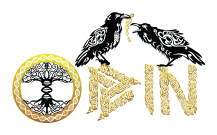Table of Contents
Understand where a protein binds or interacts with other molecules
Unless there is an already determined interaction motif it is not very feasible to predict binding sites from amino acid sequences alone. Even with the protein structures the problem is extremely complicated because it is a three dimensional search. Most programs out there even if they do suggest they might be able to help have usually only been verified on extremely small and particular training sets.
If you don't have a structure you are in bad starting spot. There are things like covariation analysis(looking for regions of the protein that vary or don't vary together) and trying to use that to predict spots that could be important in binding but still not great. If you haven't already you should create a homology model of the protein using something like SWISS Model(http://swissmodel.expasy.org/). Once you have that you can look for possible binding regions through analysis. Proteins tend to interact using loops or helices through salt bridges or hydrophobic surfaces. Use some or all of these servers to narrow things some maybe(http://rosettadesigngroup.com/blog/58/10-protein-protein-interface-prediction-servers/). After that the only real way to test is trial and error using site directed mutagenesis and mutating the protein and measuring binding between the protein and its ligand(binding partner).
Molecular dynamics won't really help in this situation because the search space is so massive. You can't just throw two proteins(or even a protein and small molecule) into an MD simulation and hope they bind, they won't. Most MD simulations are for understanding thermodynamics and not kinetics(binding is a kinetic event though it involves thermodynamics) because without doing fancy techniques and extrapolating a lot the timescale of MD simulation is in nanoseconds to low microsecond(even with the best super computers).
If the binding effects an actual pathway that creates a phenotypic change you are doing great. Then you can just knock out the endogenous gene in yeast and and put it in a plasmid then using that system screen a bunch of mutants. If there is no great phenotypic change things become much more complicated. You would need to do binding assays, which most likely involves pull downs unless you have access to purified protein.
Engineer and organism to express a gene(in progess)
In all organisms there are a few basic things you need to express your own gene
- Promoter
- Ribosome Binding Site (RBS)
- Gene
- Terminator
There are a number of plasmids that exist that already contain all of these elements and it is as simple as ordering the gene from a DNA synthesis company such as IDT(http://idtdna.com). Other times you need to work from scratch because you want to or need to because you have specific requirements for the genes you are trying to design.
Concentrate your DNA
DNA binding buffer use at a ratio of 10x with DNA being concentrated using a minimum of 600uL. You can spin multiple times to keep adding DNA. Use 750uL wash.
DNA Binding Buffer
5.5 M guanidine thiocyanate or 6M GdmHCl
20 mM Tris HCl
pH less than 7
Wash Buffer(same as miniprep wash)
10 mM Tris-HCl pH 7.5
80% ethanol
- Add 600uL of DNA binding buffer to miniprep column. Add 60uL DNA to be concentrated. Spin for at least 1 minute at >=8,000RPM. Repeat for as much DNA as you want to concentrate
- Add 750uL to column and Spin for at least 1 minute at >=8,000RPM. Dump out flow through.
- Spin for at least 1 minute at >=8,000RPM.
- Depending on your column size and final volume needed add 30uL-100uL of Water pH7 or a miniprep elution buffer.
